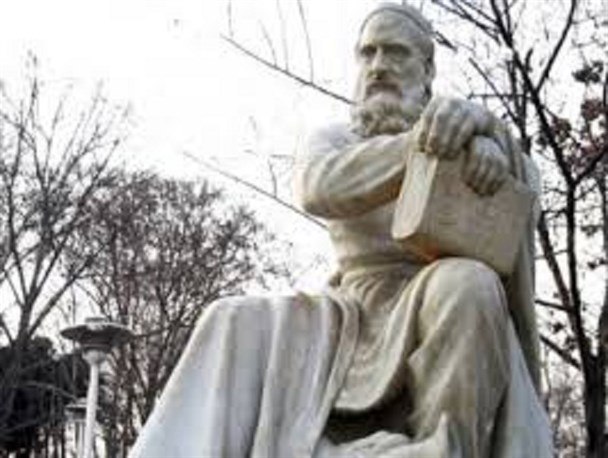#day_number_of_date
#Monday
#13th of Azar
#fourth of December #04 December
Imam Ghiyath al-Din Abul Fatah Umar Ibn Ibrahim Khayyam Neishaburi is one of the great sages, mathematicians and poets of the late 5th and early 6th centuries.
Hakim Omar Khayyam’s year of birth is not exactly known. He was born in the city of Neishabur. For this reason, they called him Khayyam because his father was engaged in the business of sewing tents.
He was considered one of the greatest scientists of his time and had an extraordinary intelligence and a powerful and strong memory.
In his youth, Khayyam studied science and knowledge so that he reached high positions in philosophy, astronomy, and mathematics, and he was also skilled in medicine, so it is said that he treated Sultan Sanjar, who was afflicted with smallpox when he was a child. has done
He also writes poetry in both Persian and Arabic languages and has written valuable books in various sciences.
Khayyam had great status and fame in his time, and his contemporaries praised him with great titles such as Imam, Philosopher, and Hojjat al-Haq.
Khayyam lived during the Seljuk government, whose territory included Khorasan to Kerman, Ray, Azerbaijan and the countries of Rome, Iraq, Yemen, and Persia.
During Khayyam’s lifetime, important events took place, including the Crusades, the fall of the Al-Buyeh government, and the uprising of the Seljuq government.
He spent most of his life in the city of Neishabur and during his lifetime he left Neishabur only twice. The first trip was to perform Hajj and the second trip was to Ray and Bukhara.
Khayyam was skilled in astronomy so that a group of astronomers cooperated with him in building the observatory of Sultan Malik Shah Seljuq.
He decided to modify the calendar at the request of Seljuk Sultan Malek Shah, which is known as the Jalali calendar.
Although his fame is mostly as a poet, Khayyam was actually a philosopher and mathematician who worked on the works of Abu Ali Sina and translated one of his famous sermons about the uniqueness of God into Persian.
Khayyam was an astronomer and today’s Iranian calendar is the result of calculations that he and some other scientists made during the time of Jalal al-Din Malik, a Seljuk king, and it is called the Jalali calendar after him.
He has also written a treatise on how to do astronomical calculations. In addition to mathematics and astronomy, he was also proficient in philosophy, world history, linguistics and jurisprudence.
He taught Greek science and philosophy and encouraged students to physical exercise and self-cultivation.
One of the famous Persian works attributed to Omar Khayyam is the treatise on Nowruz-nameh, which, in simple and eloquent prose, recounts the birth of Nowruz and the customs of its celebration in the Sassanid court.
In this treatise, he spoke with great fascination about the Jahandari religion of the ancient Iranian emperors and the professions and knowledge that were of interest to them, and he introduced the bodies of some of the fictional and historical kings of Iran.
This post is written by None
